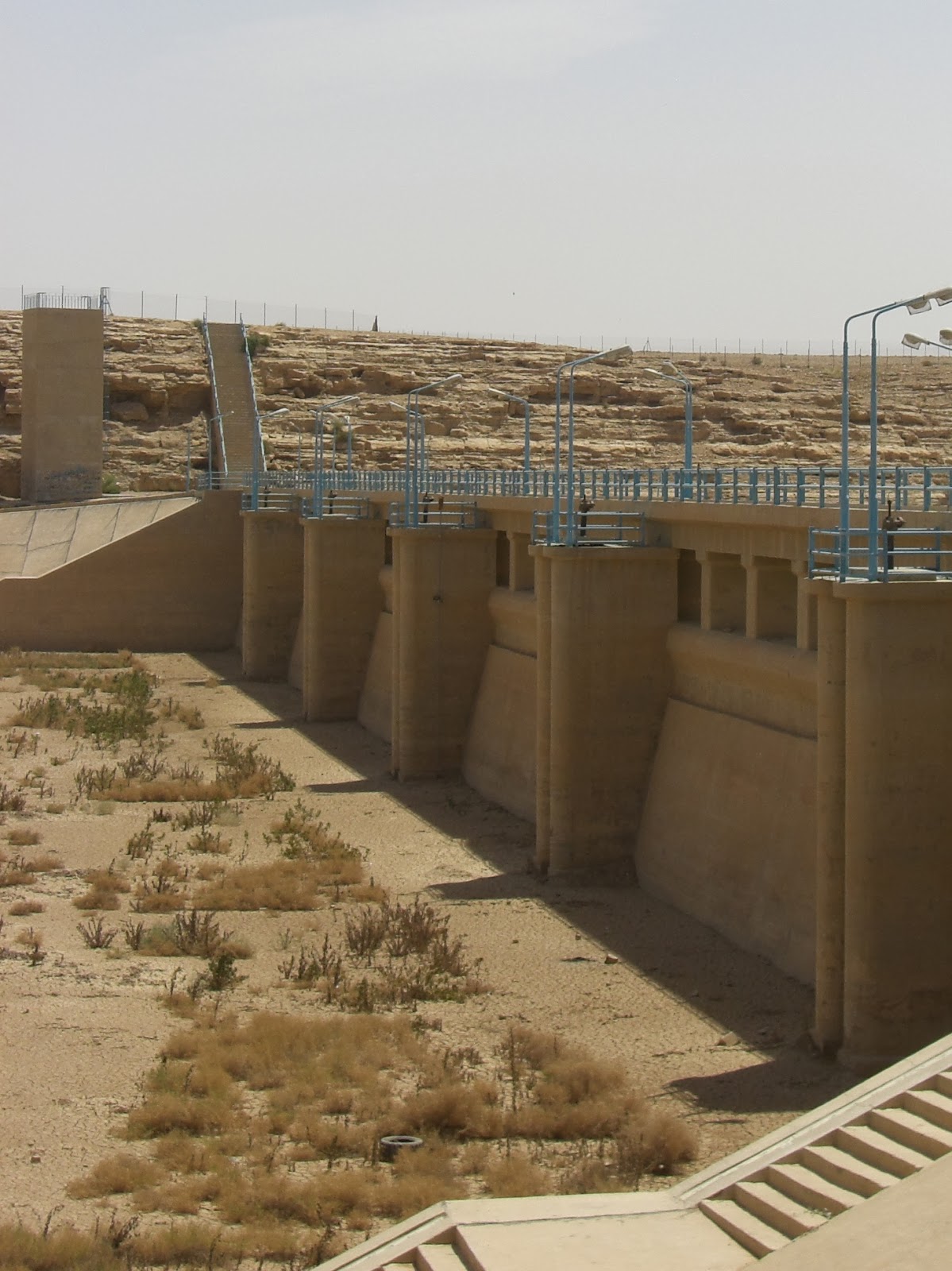People told us that after it rained Wadi Hanifah filled with water. But we’d visited and seen it looking like this.
So when my husband cheerfully suggested that we go there last weekend, because the recent rain meant there’d be water and the dam would be full, I was unconvinced. It had been so very, very barren last time. Imagining water was just too hard.
Wadi Hanifah is a valley is named after an ancient Arab tribe, Ban Hanifah. Following an initial UNESCO scoping report in 2008, the Saudi government’s poured millions of dollars into preserving and developing the wadi wetlands, including building the Al Elb dam to regulate water flow. In addition, in 2010 it won the Aga Khan Award for Architecture. A project of monumental proportions; it’s been beautifully done, with landscaped walking paths, picnic spots, palm trees, and bouganinvillea lining the road that gently winds through the wadi.
Beautiful that is, until the public
started visiting. Now the landscape’s scarred by litter. Like most parks and
outdoor areas here, the rubbish is everywhere. Instead of migratory birds, think old
plastic bags flying from tree branches.
As we walked down to the water’s edge it felt as if the whole place had been turned into a giant tip. It was most definitely not the delicate ecosystem of the project’s original brief.
People had picnics beside and overlooking rubbish.
We watched as a couple sat a table and let the breeze blow their wrappers onto the ground. Neither budged.
Right in front two yellow overalled workers filled black plastic rubbish bags. It was an impossible brief. As they picked up, more was dropped.
We walked towards the dam, noticing simultaneously
the bin-your-rubbish-here signs and the empty bins directly below.
As we crossed the spillway, we looked down into the water only to see more refuse. Bottles bobbed up and down among a plethora of discarded plastic and paper. We continued up the stairs at the end to take in the view.
We spent the last few days of our summer
holiday in New Zealand at Hahaei
along the Coromandel Coast. Being a South Islander, the North Island
beach line is not an area I’m familiar with, but I was overwhelmed by its beauty.
One day we walked to Cathedral Cove where the opening scene of Prince Caspian from C.S. Lewis’ Chronicles of Narnia had been shot.
On another day, we visited Hahei beach, just
a hop, skip and a jump from where we were staying, and watched the youngest
member of our party timidly test the water and try to eat the sand.
In the early evening we drove to Hot Water
Beach and dug into the sand to create our own thermal pool.
And everywhere, it was clean and pristine.
Along the track to Cathedral Cove there was not a wrapper to be seen. I'm sure I noticed it because of living in
Saudi Arabia. I remember visiting Half Moon Bay near Khobar, where I'd stepped
out of our car, narrowly avoiding a used disposable nappy. It had made the
visit memorable for all the wrong reasons.
Here, on this part of the North Island coast, not only were the views the best in
the world, people seemed to care enough to want to keep them that way.
As we prepared to leave Wadi Hanifah, we walked back across the spillway and passed
some graffiti with quite a different
message. It seemed to sum up the whole local couldn’t-care-less attitude to the
environment.



















No comments:
Post a Comment